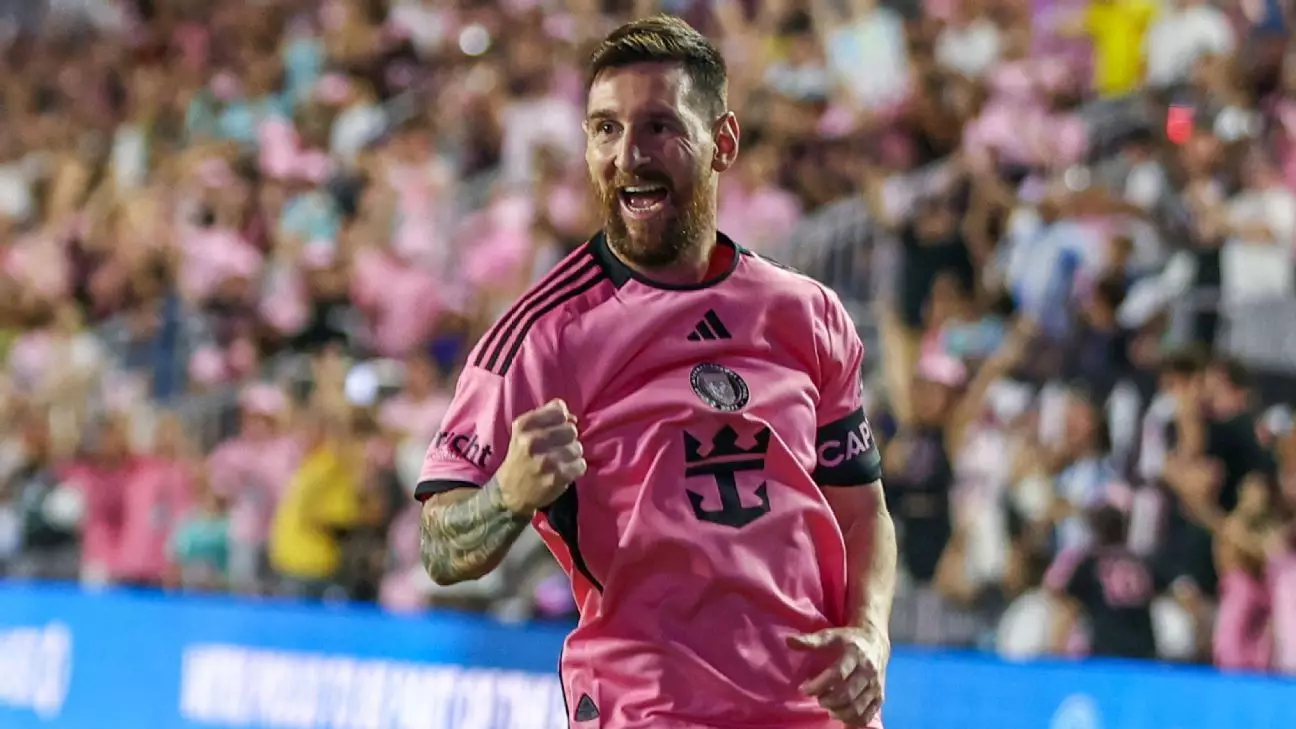The world of soccer has witnessed an unprecedented shift in the dynamics of Major League Soccer (MLS), heavily influenced by superstar Lionel Messi’s arrival at Inter Miami. As recent data released by the MLS Players Association (MLSPA) illustrates an average salary hike for MLS players by nearly 10%, it not only reflects Messi’s individual financial impact but also highlights the evolving landscape of player compensation and expenditure across the league.
Lionel Messi’s signing with Inter Miami is more than just an exciting addition to the roster; it heralds a new era in MLS. With an annual guaranteed compensation of around $20.4 million — excluding a lucrative cut from the league’s Apple TV deal — Messi’s financial remuneration sends a clear message to the soccer world: players in MLS can earn substantial wages that compare favorably to their counterparts elsewhere. The extent of Messi’s overall compensation is suggested to be between $50 million and $60 million, dwarfing the payrolls of 22 other teams in the league. This impact is acute and can be felt across the MLS, pushing the boundaries of player salary structures and expectations.
As the average salary for MLS players climbs to $596,226, the long-standing narrative that U.S. soccer lags behind its European counterparts in financial viability is being challenged. The data indicates that even the median salary has jumped to $308,375, a considerable improvement, especially for lower-tier players. Amidst these figures, Messi becomes a symbol of how star players can revolutionize the financial ecosystem of a league, influxing capital and interest.
The pronounced disparity in how teams allocate their resources is evident, with Inter Miami’s total expenditure of $41.7 million far exceeding that of many clubs — more than double the average spend of $18.41 million per team. Unexpectedly, despite the lavish investment, success is not guaranteed. Notably, four of the top ten spending teams failed to qualify for the MLS Cup playoffs, indicating that heavy financial investment does not directly correlate with competitive success.
Teams like Toronto FC and LAFC are attempting to replicate Miami’s success but face the challenge of their own results reflecting the cost outlays. This raises questions about the sustainability of such strategy as clubs vie for both immediate glory and future stability. While teams such as CF Montreal maintain a frugal payroll of just $11.43 million, they may benefit from a more calculated approach, concentrating on developing talent rather than relying solely on big-name signings.
The MLS is not just surviving but thriving in the context of collective bargaining agreements and steady growth in its player wage structure. As MLS enters the fourth year of the collective bargaining agreement that runs through 2027, the framework ensures a consistent revenue flow that fuels salary increases across the board. This gives a degree of financial empowerment to the players and could result in a more competitive league overall.
Looking into the future, with franchises like San Diego FC set to join the league in the upcoming years, the potential for wages and contracts to continue on their upward trajectory is substantial. The rise in salaries should not only enhance the quality of play, but also attract more international talent, contributing to a more diverse and inclusive soccer landscape.
The confluence of star power like Messi and escalating financial investments is reshaping the ethos of Major League Soccer. While Inter Miami leads the charge with its astounding payroll, the implications are widespread, fostering a broader evolution within the game. The positive trajectory of player salaries, coupled with new franchises and agreements, suggests that MLS is not merely catching up to global standards but may well redefine them.
As the league continues to innovate in both its financial strategies and competitive structures, it will be fascinating to observe how teams adapt. The intertwining of elite player salaries with team performance and overall league growth paints a promising picture for the future of soccer in the United States, positioning it as a formidable player on the world stage.
